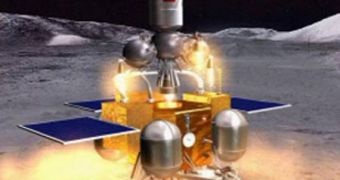Following the launch of the Chang'e-1 lunar orbiter in 2007, China has begun taking an active interest in the Moon and its surface, and is as such preparing a follow-up mission.
The new flight will be conducted by a more advanced spacecraft, that will feature expanded capabilities from its predecessor. The new orbiter reflects China's commitment to thorough space exploration.
Over the past decade or so, the Asian nation has begun taking a very active interest in low-Earth orbit and the Moon, and has announced plans to build its own space station and lunar exploration robots.
It has already demonstrated that it has human spaceflight capabilities a couple of years ago, when the first taikonaut was successfully flown to space. Back in 2008, a Chinese astronaut conducted the nation's first spacewalk.
Later this year, or in early 2011, the country plans to test its orbital rendezvous capabilities. If it can successfully mate two spacecraft in LEO, then its path to building a space station will open.
But this is only one side of the Chinese space plans. Officials at the China National Space Administration (CNSA) also put equally-impressive efforts into lunar exploration.
By the end of 2010, the experts want to launch Chang'e-2, the second moon orbiter, Xinhua announces. The Chang'e Moon exploration program features three stages, and this is the second one.
Current plans call for Chang'e-3 to land on the Moon by no later than 2013. Chinese officials are convinced that the plan is entirely feasible, Space reports.
“It is estimated Chang'e-2 can reach lunar orbit within five days, compared to 13 days, 14 hours and 19 minutes for Chang'e-1,” told Xinhua expert Ouyang Ziyuan.
He is the chief scientist of the China Lunar Exploration Project, which runs Chang'e. The expert reminds that the first lunar orbiter conducted a successful 16-month flight above the Moon, from October 2007 to March 2009, when it crashed onto the satellite's surface.
“China has not been to Moon before the country launched Chang'e-1, so we were very prudent at that time and adjusted its orbit in a very slow manner,” Ouyang explains.
“It flew a journey of 2.06 million [kilometers] before reaching lunar orbit. But it's different now. We are more sure about the launch,” he adds, saying the the second orbiter will also feature an advanced digital camera.
It is planned to orbit the Moon at an altitude of 100 kilometers, or 60 miles, which will give it an excellent view of the lunar surface.

 14 DAY TRIAL //
14 DAY TRIAL //